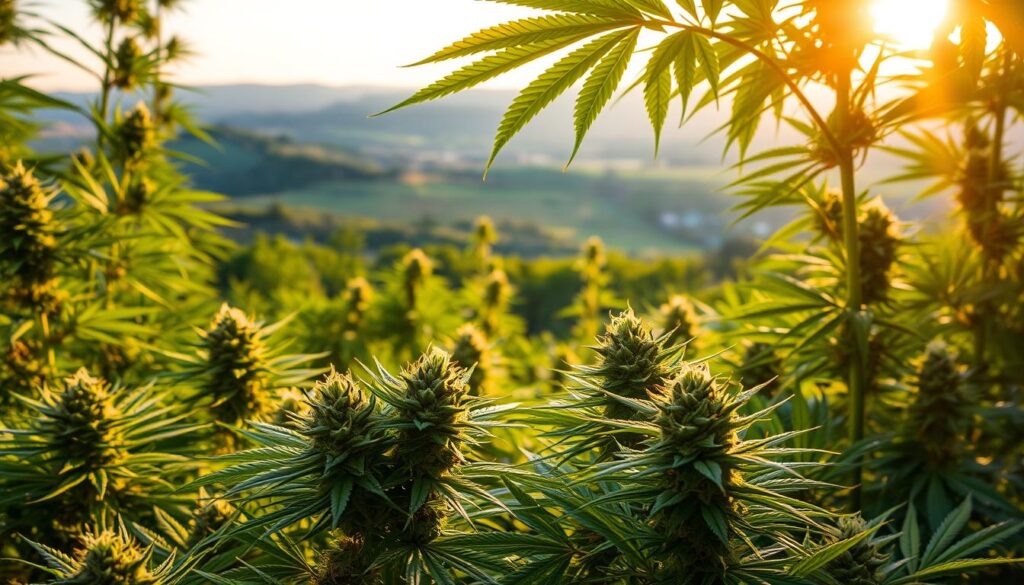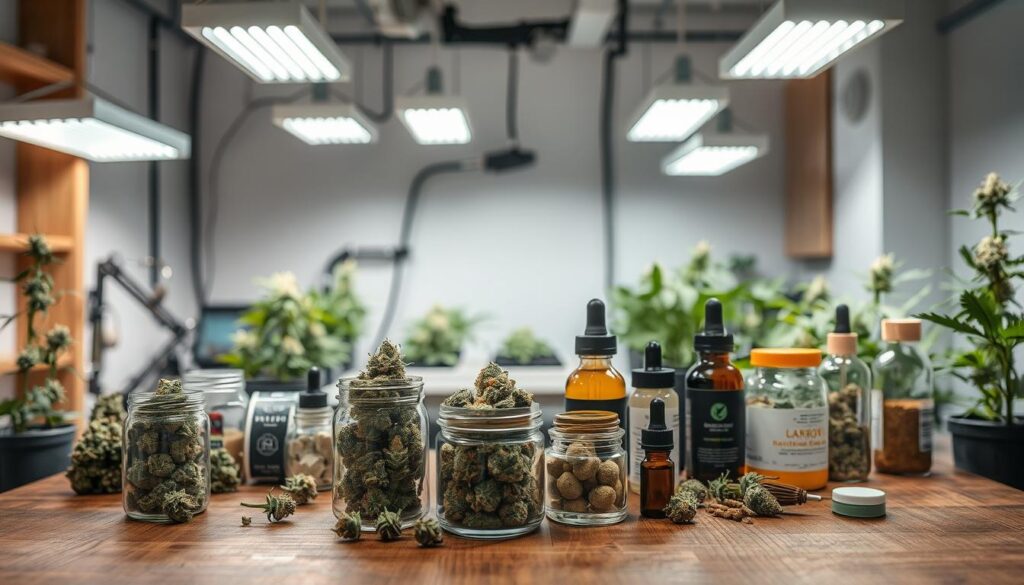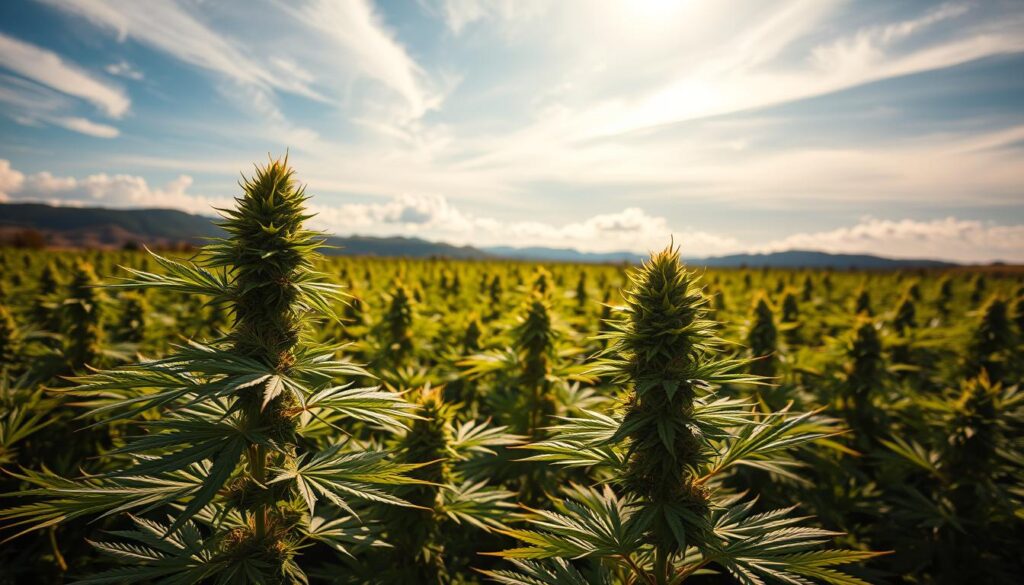Thinking about growing your own weed in St. Julian? You’re not alone. This coastal spot is becoming a hotspot for weed lovers. Local shops like Medicinal are leading the way, making it a great time to grow your own.
Before you start, you need to know Malta’s weed laws. Adults can grow up to four plants at home, but they must be hidden. For more info on staying legal, check our guide to Malta’s weed laws.
Getting started is easy with local help. Shops in the area have everything you need, from soil to grow lights. The community here focuses on growing weed in a green way, just like in the Mediterranean.
Key Takeaways
- Malta allows adults to grow up to four cannabis plants per household
- Specialized stores provide essential cultivation tools and nutrients
- Community networks offer valuable growing tips and support
- Climate-friendly techniques work best in St. Julian’s coastal environment
- Proper storage of harvested plants ensures legal compliance
Understanding Local Laws and Regulations
Before you start growing, you need to know the rules. St. Julian has laws about growing cannabis. It’s important to follow these to avoid trouble.
The Legal Status of Weed in St. Julian
Adults 21+ can grow cannabis at home in St. Julian. But, you must buy seeds or clones from licensed dispensaries. Buying from unlicensed sellers means you can’t grow.
State-Specific Regulations You Should Know
St. Julian has its own rules, based on New York’s laws. Important rules include:
- A maximum of 6 plants per household (3 mature, 3 immature)
- Growing areas must be secure and out of public view
- Purchase limits of 1 ounce per transaction at dispensaries
These rules help keep cannabis out of the illegal market. Breaking them can cost up to $500 for the first time.
How to Stay Compliant While Growing
Follow these steps to stay out of trouble:
- Keep purchase receipts from licensed shops (required for legal protection)
- Use odor-control measures if neighbors are nearby
- Never sell homegrown cannabis – it’s strictly for personal use
Keep track of your plants with a calendar. This helps if the police ask questions. Staying compliant helps everyone in the local cannabis community.
Choosing the Right Strain for Your Garden
Choosing the right cannabis strain is key to a successful garden. It affects growth speed and flavor. In St. Julian’s warm climate, local growers mix tough local plants with popular ones for strong, high-yielding plants.

Indica vs. Sativa: What You Need to Know
Indica strains do well in cooler weather and grow short. They’re great for relaxing and easing pain. Sativa plants grow tall, need lots of sun, and give you energy. In 2023, tests showed mixing these types made plants 40% more resistant to mold in wet climates.
Hybrid Strains: The Best of Both Worlds
Hybrid strains are perfect for solving climate problems and boosting strength. Here are some top picks:
| Strain | Growth Time | THC Range | Climate Fit |
|---|---|---|---|
| Mango Haze | 9-10 weeks | 18-22% | High humidity |
| Blue Dream | 8-9 weeks | 20-24% | Moderate heat |
| Island Kush | 10-12 weeks | 15-18% | Coastal areas |
Factors to Consider When Selecting a Strain
- Local climate: Choose mold-resistant strains near St. Julian’s coast
- Growth space: Small gardens do well with compact indicas
- Purpose: Medical or fun use changes what you need
“Blending Caribbean landraces with Dutch genetics gave us plants that flower faster without sacrificing terpene quality.”
New growers should check out best weed delivery St. Julian services. They offer tested clones that grow better than seeds.
Setting Up Your Growing Space
Creating the perfect space for your cannabis plants is like building a custom home. It needs to fit your goals, space, and local conditions. Whether you’re making cannabis products St. Julian dispensaries love or growing for yourself, your setup matters a lot. It affects plant health and how much you’ll get.

Indoor vs. Outdoor Growing: Pros and Cons
Indoor growing lets you control light, temperature, and humidity. It’s great for growing all year. Outdoor gardens use natural sunlight and soil. They often grow bigger plants with richer flavors.
| Indoor | Outdoor | |
|---|---|---|
| Cost | Higher upfront | Lower initial |
| Yield | Smaller, frequent | Larger seasonal |
| Pest Risk | Easier to manage | More exposure |
Greenhouses are a smart choice. They mix natural light with climate control. This lets you grow premium cannabis products St. Julian markets want without weather worries.
Essential Equipment for Indoor Gardens
Starting an indoor grow? You’ll need these basics:
- Full-spectrum LED lights for energy-efficient growth
- Oscillating fans to strengthen stems
- Carbon filters to manage odors
- pH meters for nutrient monitoring
Don’t forget timers! They help plants grow better by keeping light cycles steady. Use good soil or hydroponics for strong roots.
Preparing Your Outdoor Garden for Success
1. Test your soil first. Cannabis likes slightly acidic earth (pH 6.0-6.5).
2. Clear debris and till the ground to improve drainage. Raised beds are great in clay-heavy areas.
3. Use companion plants like marigolds to keep pests away naturally. Avoid chemical sprays for organic growing.
4. Install windbreaks if your area gets strong gusts. Young plants can snap easily.
Following these steps helps grow outdoor buds that are as good as indoor-grown cannabis products St. Julian fans love.
Soil and Nutrients: What Your Plants Need
Top-rated dispensaries in St. Julian pick special soil. They know how volcanic soil and nutrients make great buds. Plants need these to grow strong roots, bright leaves, and lots of resin.
Understanding Soil Types for Growing Weed
Not all dirt is the same. Sandy soils drain fast but lack nutrients. Clay soils hold too much water. But, loamy soil is the best—it has sand, silt, and clay.
St. Julian’s secret is volcanic soil. It’s full of minerals like potassium and phosphorus. This is why growers at Medicinal Cannabis Co. get 23% more THC in their buds.
Nutrient Requirements for Healthy Plants
Weed plants need three main nutrients:
- Nitrogen (N): Helps leaves grow during the growing season
- Phosphorus (P): Helps roots grow and buds form
- Potassium (K): Keeps plants healthy
When buds start to form, cut back on nitrogen and add more phosphorus. A 2-8-4 NPK ratio is best for most plants. Test your soil every month. You can buy kits at top-rated weed dispensary St. Julian places like Green Haven.
Organic vs. Synthetic Nutrients: Making the Right Choice
Organic nutrients feed plants slowly and make soil better over time. Synthetic nutrients work fast but can harm soil. Here’s a quick comparison:
| Organic | Synthetic | |
|---|---|---|
| Cost | More expensive at first | Cheaper at first |
| Soil Impact | Improves soil health | Can hurt soil |
| Best For | Good for long-term growers | For quick fixes |
Growers who use volcanic soil often choose organic nutrients. They match the soil’s natural minerals. As one Green Haven grower says: “You can taste the terroir when nutrients and soil work in harmony.”
Tips for Successful Cultivation
Growing great cannabis in St. Julian doesn’t need a big budget. Just use smart strategies. These tips will help you grow more while spending less. Let’s look at the basics for growing healthy plants.
Watering Techniques for Optimal Growth
Don’t overwater like new growers often do. Plants need water but also air in their roots. Check the soil by sticking your finger in it. If it’s dry, it’s time to water.
For consistent results, try these:
- DIY drip systems using recycled bottles
- Smart timers that sync with weather forecasts
- Self-watering fabric pots (perfect for outdoor grows)
Local growers in St. Julian’s Medicinal training program say automated watering helps a lot. Start simple before getting complex.
The Importance of Light and Temperature Control
Cannabis needs the right conditions to grow well. Here’s what works in St. Julian’s climate:
| Environment | Day Temp | Night Temp | Light Hours |
|---|---|---|---|
| Indoor (Vegetative) | 70-85°F | 65-75°F | 18-24 |
| Outdoor (Flowering) | 65-80°F | 60-70°F | 12 |
Use reflective mulch outdoors to get more light. Indoors, LED grow lights with dimmers help control heat. Plants also need darkness! A simple timer can prevent light stress.
Pest Management Strategies for Your Weed Plants
Chemical pesticides harm flavor and go against organic growing. Try these budget-friendly defenses instead:
- Plant marigolds as natural pest deterrents
- Mix neem oil with water (1 tbsp per gallon)
- Introduce ladybugs to eat aphids
“Prevention beats cure every time. Healthy soil grows pest-resistant plants.”
Rotate crops annually if growing outdoors. For indoor spaces, weekly checks with a magnifying glass catch problems early. Many growers find companion planting reduces pests by up to 60%.
Harvesting and Curing Your Weed
Timing and technique are key when ending your cannabis journey. Good harvesting and curing make your weed special. They keep flavors and strength high.
When to Know Your Weed is Ready to Harvest
Look at trichomes with a jeweler’s loupe. White or amber resin glands mean it’s ready. Also, look for brown pistils and curled calyxes.
Harvesting too early cuts THC levels. Waiting too long makes it too sedative.
Best Practices for Harvesting Your Plants
Use clean pruning shears to cut branches. Remove fan leaves first, then sugar leaves after drying. Be gentle with buds to keep trichomes.
Outdoor growers in St. Julian should harvest in the morning. This keeps terpenes fresh before heat rises.
Curing Process: Ensuring Quality and Flavor
Hang branches in a dark, well-ventilated area at 60-70°F for 7-10 days. Move dried buds to airtight glass jars. Open them daily for 2-3 weeks to let moisture out.
This method, used by New York’s top dispensaries, improves aroma and smoothness. Local weed shops in St. Julian offer kits and tools to help. They also have jars that block UV light.
Share your harvest stories with these shops. Their feedback can help improve your next grow.

